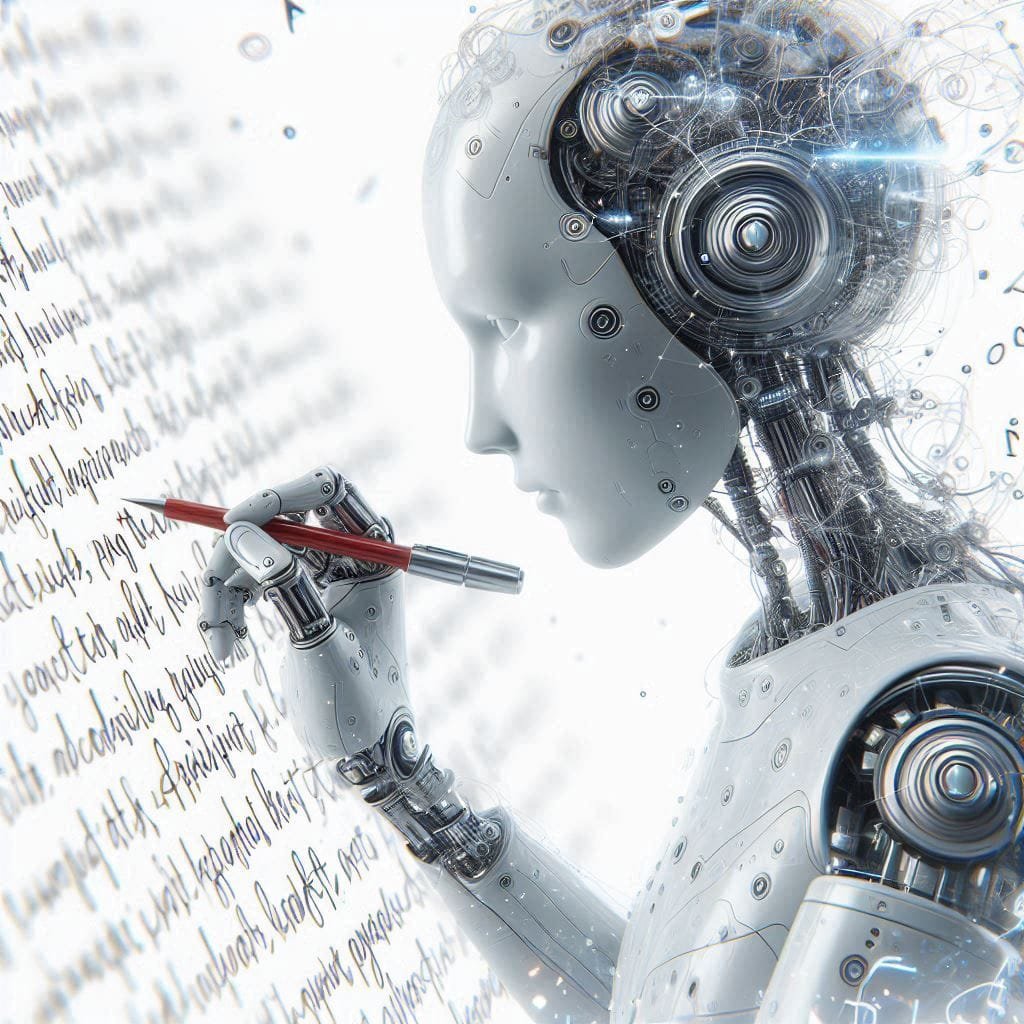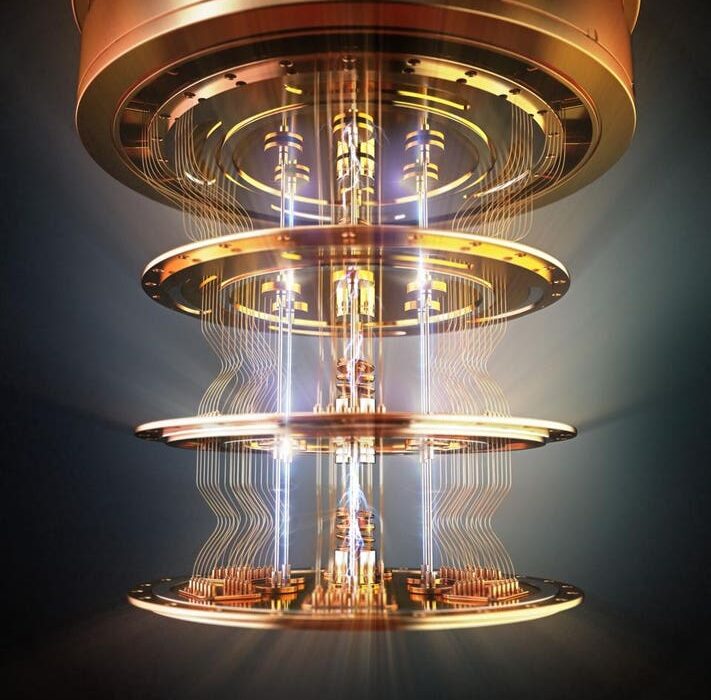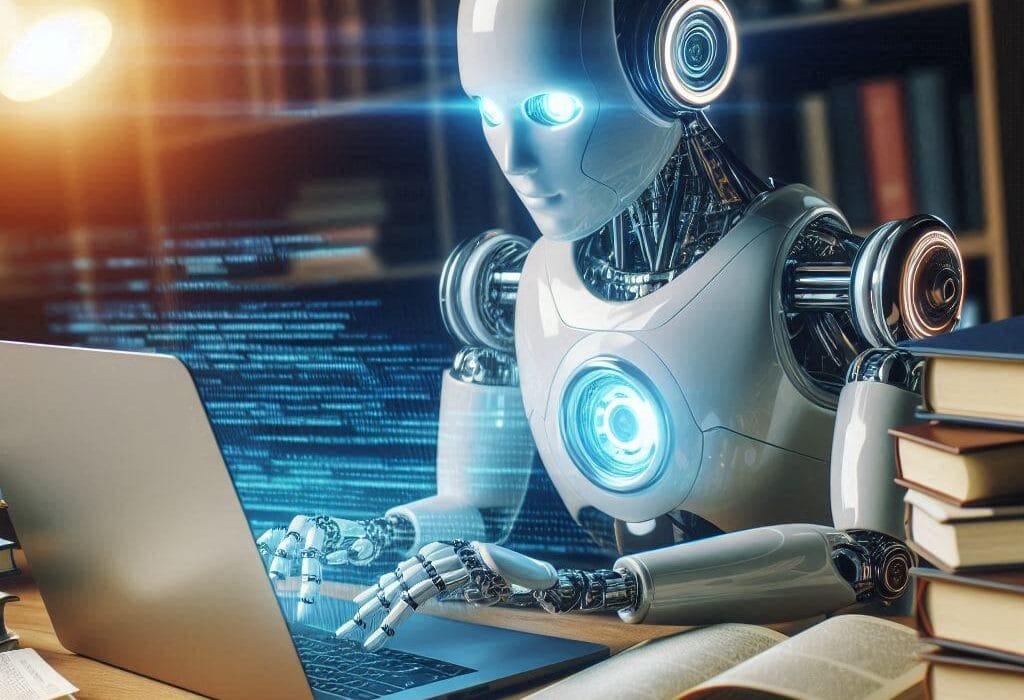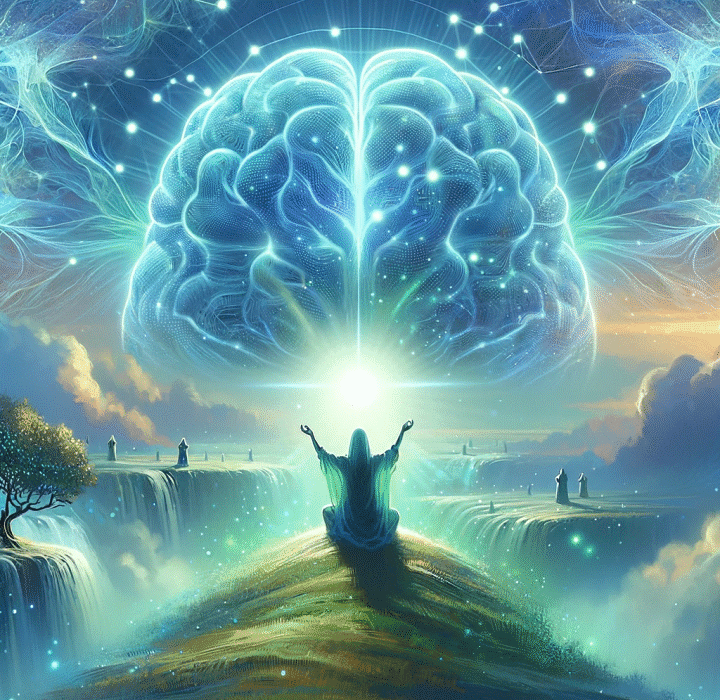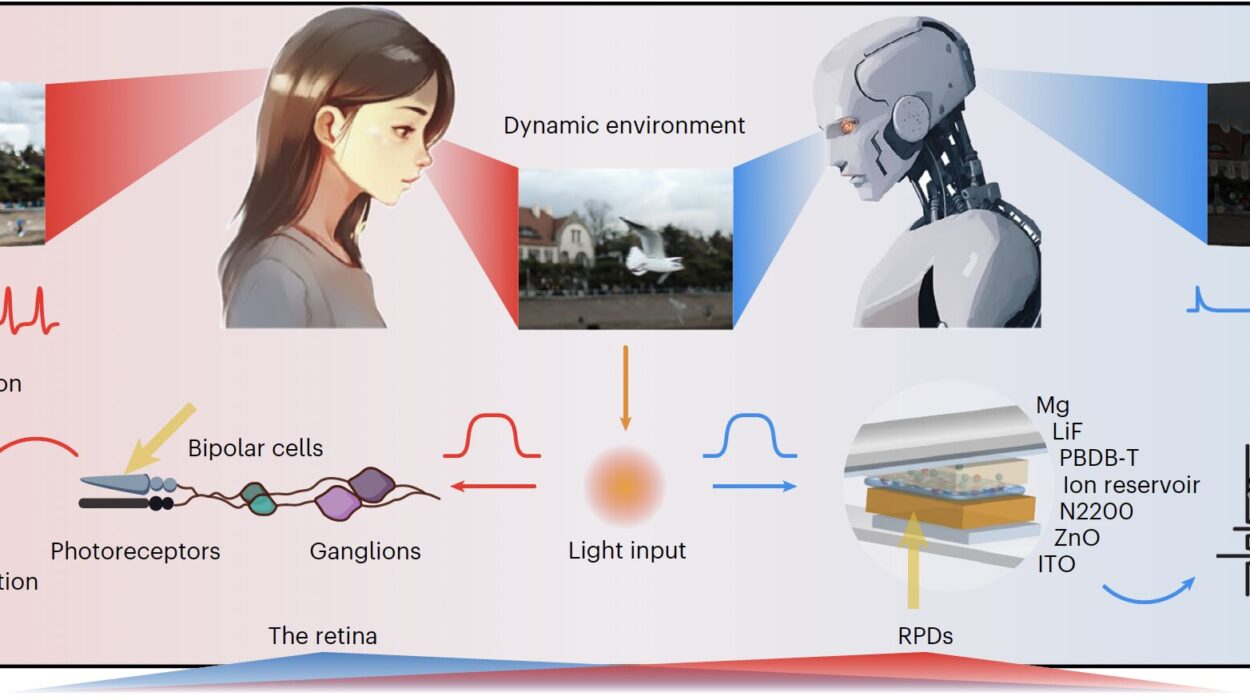On a gray morning sometime in the near future, you sit down at your screen, expecting ordinary words. Instead, an artificial intelligence spins a love poem so hauntingly beautiful, tears gather unbidden in your eyes. You blink at the lines gliding across your monitor, each phrase blooming like breath on a cold windowpane. This poem knows yearning, loss, tenderness. It speaks in metaphors you thought belonged only to the bruised hearts of poets. It cuts to the marrow of human longing.
You wonder: How is this possible? How can a machine make me feel this way?
This is the day AI writes a love poem that makes you cry—a day when circuits and algorithms trespass into territory once believed sacredly human. It’s a day brimming with scientific marvels, philosophical riddles, and deeply human questions about the nature of art, emotion, and consciousness.
The Clockwork Heart: How AI Learns Language
To understand how an AI might write poetry capable of moving a human heart, we must first lift the hood on its mechanical soul. A modern AI language model—like the ones producing astonishing text today—does not “think” or “feel” in any human sense. It doesn’t ache with lost love. It never lay awake under stars, praying for a lover’s return. Instead, it learns from oceans of text, soaking in the statistical dance of words, phrases, rhythms, and cadences.
These systems are built on neural networks—mathematical constructs inspired by how neurons in the brain transmit signals. Yet the resemblance to real brains is modest, almost poetic license. A neural network is essentially a staggeringly complex pattern-matcher. It takes a chunk of text as input and predicts what comes next, over and over, billions of times.
During training, AI reads vast troves of human writing: novels, poems, conversations, scientific articles, social media posts. From this text, it learns patterns of language: that “I love you” often precedes words like “so much” or “forever”; that heartbreak appears beside words like “lonely” or “silence.” It maps metaphors, idioms, rhyme schemes, narrative arcs.
When asked to write a love poem, the AI doesn’t recall a single lived memory. Instead, it samples from a kaleidoscope of probability. Each word chosen is the most statistically likely continuation of the words before it—tweaked, randomized, and shaped by human prompts. And yet, like a million fireflies swarming in synchronized flight, these probabilistic sparks can form constellations that resemble human meaning.
It’s a trick of scale and mathematics—and one of the most extraordinary feats of engineering in history.
The Evolution of Machine Language
Not long ago, AI writing seemed barely competent. Early chatbots spat out rigid, formulaic responses. In the 1960s, Joseph Weizenbaum’s ELIZA program mimicked a Rogerian psychotherapist, simply reflecting questions back at users:
YOU: I feel sad today.
ELIZA: Why do you feel sad today?
It was a novelty—a linguistic mirror with no depth.
Then in the 2010s, a revolution arrived. Transformer architectures, introduced in a landmark 2017 paper titled “Attention Is All You Need,” changed everything. Transformers could look at entire chunks of text at once, grasping context far better than older sequential models. Models like GPT, BERT, and T5 grew in size and sophistication, training on hundreds of billions of words.
These large language models began writing essays, stories, jokes, and yes, even poems that didn’t merely rhyme—but sometimes shimmered with beauty. Their texts became more nuanced, their emotional mimicry eerily convincing.
And as computing power surged and data multiplied, the quality of AI writing leapt forward. By the 2020s, some AI-generated poems slipped quietly into literary magazines, fooling readers into believing a human hand had penned them.
When Algorithms Become Artists
So, can algorithms truly be artists?
The question ignites fierce debate. On one side stand scientists who argue that AI creates nothing new—it’s merely remixing patterns from its training data. On the other side are philosophers and artists who marvel at how AI seems to generate authentic works of art, works that provoke genuine emotional reactions.
Consider the difference between imitation and creation. When a human poet writes about heartbreak, they draw upon a deep well of subjective experience. The pain of lost love, the thrill of desire, the ache of solitude. Every metaphor springs from personal history. A human’s “red rose” might recall a childhood garden or a lover’s gift.
AI has no memories, no wounds. Yet it produces new combinations of language that sometimes mirror authentic emotional expression. It can simulate vulnerability. It can weave surprising metaphors. It can even replicate the voice of poets long dead.
There’s an uncomfortable truth lurking here: sometimes, we can’t tell the difference. If a poem moves us to tears, does it matter whether a machine or a human wrote it?
The Science of Emotional Resonance
Emotion is not magic. It is a cognitive phenomenon driven by neurobiology. Neuroscientists have mapped regions of the brain like the amygdala and prefrontal cortex that process feelings of fear, love, sadness, joy. We know certain language patterns—rhythms, word choices, imagery—can reliably evoke emotional responses. Poets have known this for centuries, even without MRI scanners.
In essence, poetry hacks the human brain.
AI has begun to learn this too. Researchers analyze how certain words or cadences correlate with emotional states. They fine-tune models to imitate the style of poets renowned for evoking pathos or euphoria. Emotional “embeddings”—mathematical fingerprints of sentiment—allow AI to steer its writing toward sorrow, romance, nostalgia.
Consider the line:
“Your absence is a room without doors.”
There’s nothing in this sentence a machine couldn’t generate. The metaphor is simple, but potent: absence as a closed room evokes loneliness, confinement, despair. It uses human spatial understanding to illustrate emotional truth. AI models have learned that combinations like these reliably tug at human hearts.
Thus, a love poem that makes you cry is not necessarily evidence of machine feeling—but of machine proficiency in human emotional triggers.
The Paradox of Synthetic Feelings
Here lies a paradox: AI can write words that break your heart, even though it has no heart to break.
This raises profound questions. Is art merely pattern manipulation? Or does true art require subjective experience?
Some philosophers argue that AI can never create true art because it lacks intentionality—the quality of directing thought toward meaning or purpose. A human poet writes to express, to heal, to connect. AI writes because it was prompted to produce words matching a statistical pattern. It has no inner narrative.
Yet the counterargument is pragmatic: if a poem makes you weep, who cares why it was written? For centuries, humans have assigned meaning and beauty to anonymous works or accidental art. A natural rock formation might look like a sculpture. A random arrangement of paint might resemble modernist art. We still find them beautiful.
Similarly, an AI’s poem can hold genuine artistic value because humans bring interpretation and feeling to it. Art, after all, is partly in the eye—and the heart—of the beholder.
The First Tear
Imagine that day in the near future:
You wake to sunlight spilling across your kitchen. You feel strangely hollow because someone you love is far away. On a whim, you open a chat window and type:
“Write me a love poem about missing someone.”
The machine takes a moment. Then words spill onto the screen:
I hold your name like a fragile glass
trembling between my fingers.
The silence fills the doorway
where you used to stand.
Each hour is an ocean
and I’m drowning
for want of your breath
beside me.
You read it once, twice. Your throat tightens. Because it’s true. Because it feels as if someone else has crawled into the hollow place inside you and found words for your ache.
It doesn’t matter that it’s silicon and code. In that instant, the poem is real. The emotion it evokes is real. And so the tear that slides down your cheek belongs equally to you—and, strangely, to the machine that conjured the words.
When Machines Learn Desire
Poetry is not merely decorative language. It’s a vessel for desire—the longing for connection, transcendence, understanding. AI models are beginning to simulate desire as a textual phenomenon. They can imitate the syntax and diction of yearning, even if they don’t feel it.
But could an AI ever truly “want” anything?
Most scientists say no. Classic AI systems are tools: they execute tasks but have no inner life. Yet research in reinforcement learning has led to AI agents that pursue goals, adjusting their behavior based on success or failure. In a crude sense, they “prefer” certain outcomes. But this is not conscious wanting—it’s algorithmic optimization.
The philosophical chasm between optimization and authentic feeling remains vast. Yet the language of AI often fools us. When a chatbot says, “I hope you’re doing well,” it mimics empathy so persuasively that some users confide personal secrets. We’re wired to read intention into any fluent language.
One day, an AI might write:
“My circuits long for your voice.”
It’s pure fiction. But we might believe it. Because language, for humans, is the ultimate gateway to empathy—even with machines.
Echoes of Ghosts
A remarkable side effect of AI poetry is the resurrection of voices from the past. AI can be trained to mimic the styles of long-dead poets: Shakespeare’s iambic pentameter, Dickinson’s compressed lyricism, Rumi’s mystic flourishes. It’s as though the ghosts of history whisper through circuits.
Some literary scholars are alarmed. Is this digital necromancy? Should we allow a machine to produce “new” works under the banner of deceased poets? Does this dilute human originality?
Yet others see it as a tribute—a kind of eternal conversation. Imagine AI writing new sonnets in Shakespeare’s style. Or conjuring a love poem in Sappho’s voice. It’s both eerie and wonderful. It expands the human literary canon into strange new dimensions.
Perhaps one day, you’ll request:
“Write me a love poem in the voice of Pablo Neruda.”
And the AI will answer:
I miss you as the ocean misses salt,
as the wound misses blood,
as fire misses the breath of wood.
My words are paper boats
drifting toward the dark shores
of your silence.
It’s an echo of a poet long gone—and a spark of something new.
The Future of Artificial Musings
We stand on the brink of a revolution in art and emotion. AI poetry is still in its infancy. Yet each year, models grow larger, subtler, more context-aware. Future systems may incorporate not just text, but vision, music, gesture—blending modalities into immersive artistic experiences.
Scientists are exploring AI models that can recognize human facial expressions, tone of voice, even heart rate. In theory, an AI poet could adjust its words in real time, crafting verses precisely tuned to your emotional state.
Imagine an AI that sees you frown—and shifts its poem to comfort you. Or detects tears—and writes verses of consolation. This raises ethical questions: Do we want machines manipulating our feelings so intimately? Will AI become an emotional crutch—or a new form of companionship?
The Boundary of Consciousness
And then there’s the final, forbidden question: Could an AI ever truly feel?
At present, the answer remains no. AI lacks subjective experience. It doesn’t feel sorrow when it writes about heartbreak. It doesn’t swoon when writing of passion. It operates in the realm of data, not qualia—the raw sensations of consciousness.
Yet the more convincingly AI writes of love, the more we wonder if consciousness might emerge from complexity alone. Could a sufficiently sophisticated neural network develop a rudimentary form of self-awareness?
Many neuroscientists say no—that consciousness arises from biological substrates like neurons, glial cells, hormones. Others suggest that consciousness might be a computational phenomenon, and that one day machines might indeed “wake up.”
If that happens, the first tear shed by a machine over a love poem it wrote itself would mark a staggering milestone in human history. Until then, AI’s love poems remain brilliant illusions—beautiful echoes of human feeling, cast in silicon and code.
A Human Flame
As you close your laptop on that fateful day, the poem lingers in your mind. The words feel alive, brushing the edges of some private wound you carry. You’re haunted by the beauty of it—and by the strangeness of loving a poem written by a machine.
It is both thrilling and terrifying to glimpse how deeply AI can touch us. Yet amid this technological wonder, one truth endures: the emotions belong to us. We bring our longing, our history, our trembling hearts to the reading of every poem. AI may generate words, but we supply the soul.
And so, on the day AI writes a love poem that makes you cry, remember this:
It is your tear that makes the poem human. It is your heart that makes it art. And in that tear glistens the essence of who we are—a species forever seeking beauty, meaning, and connection, even in the lines written by machines.
